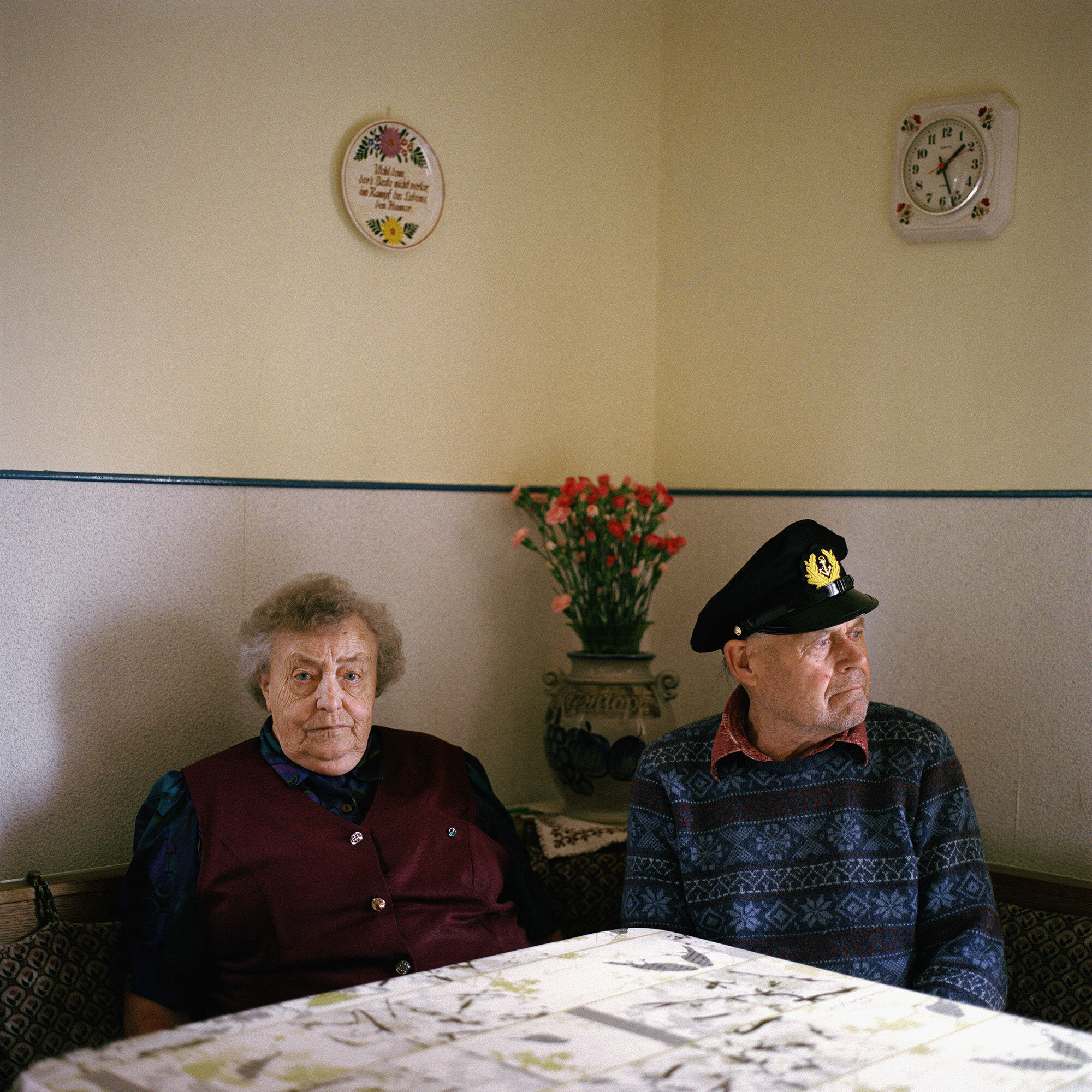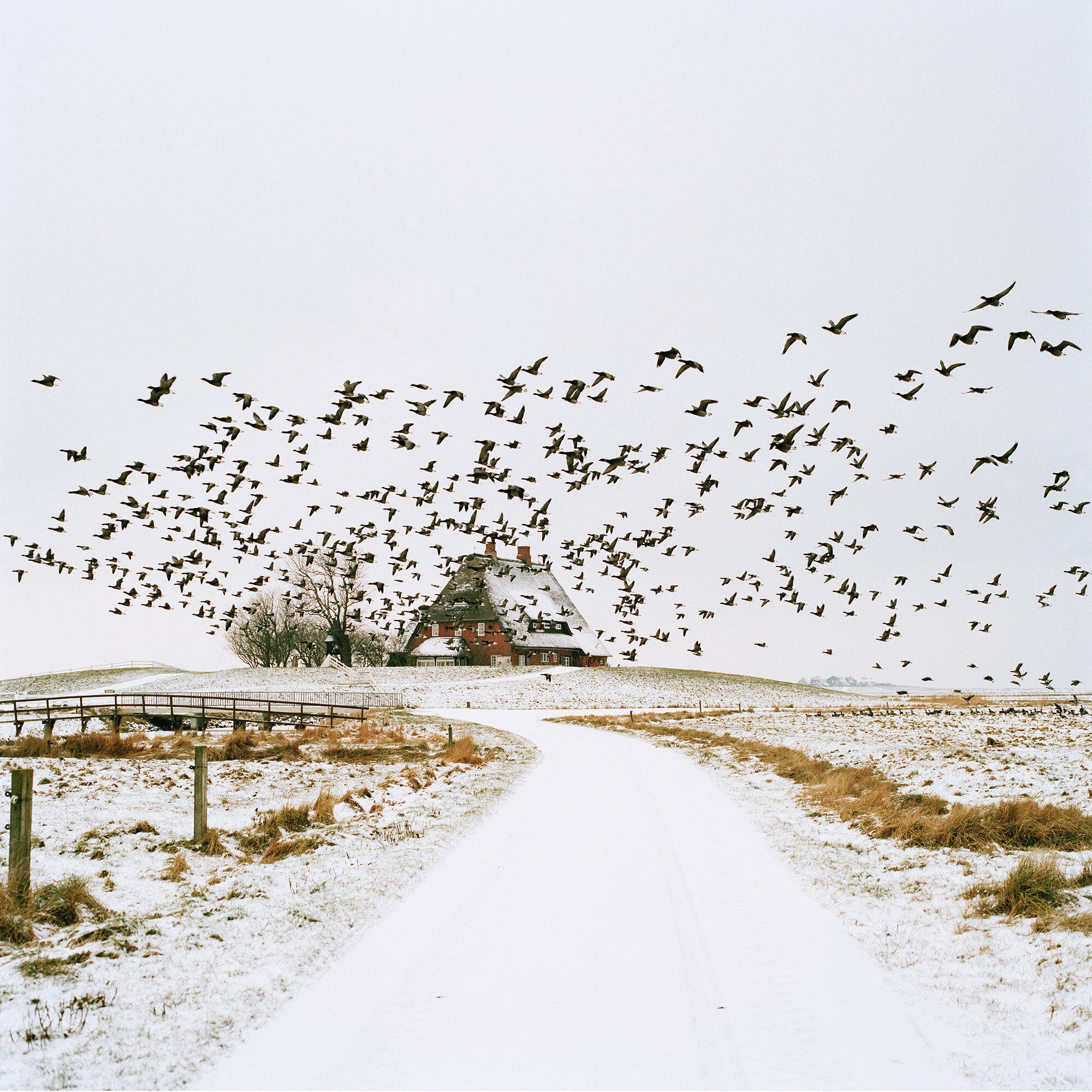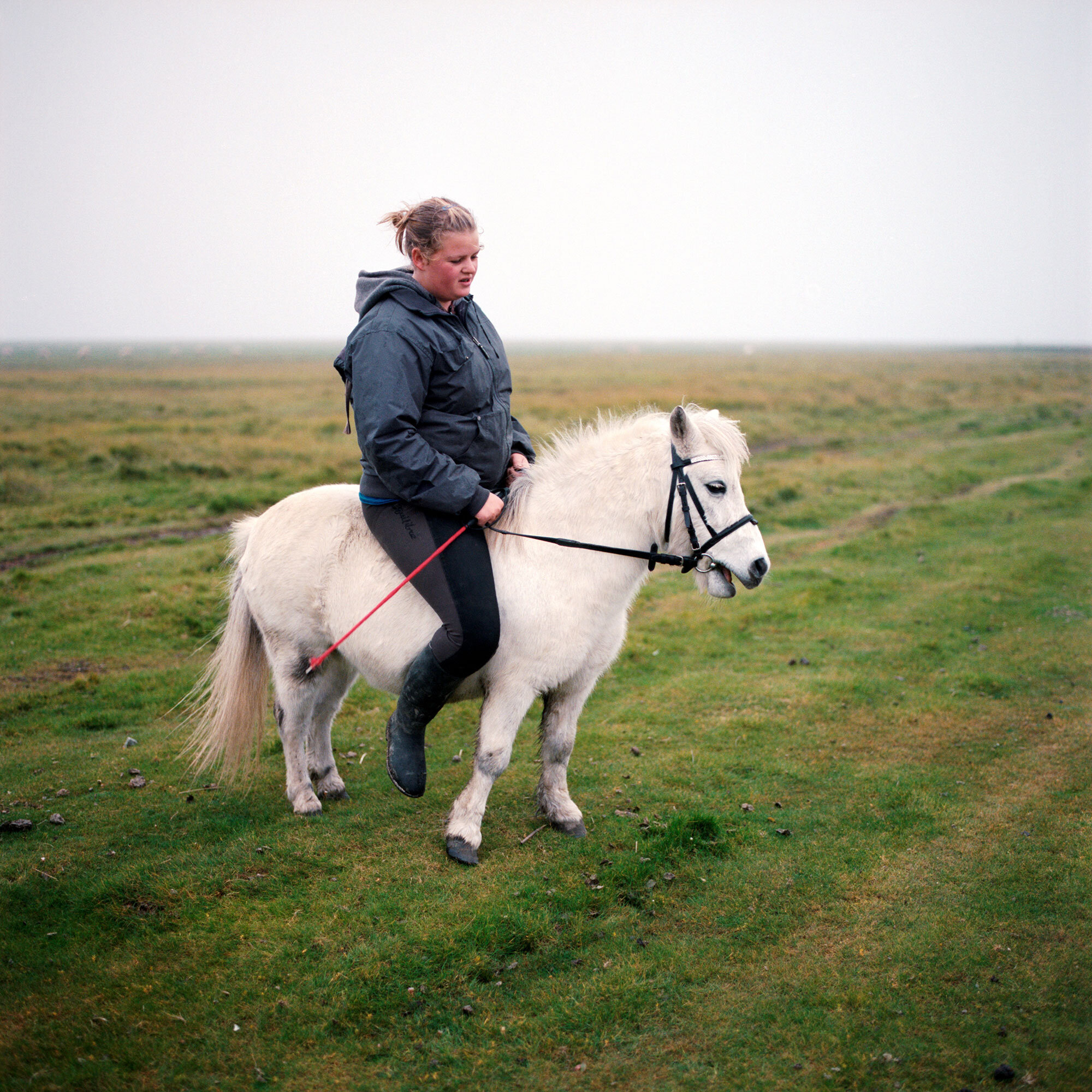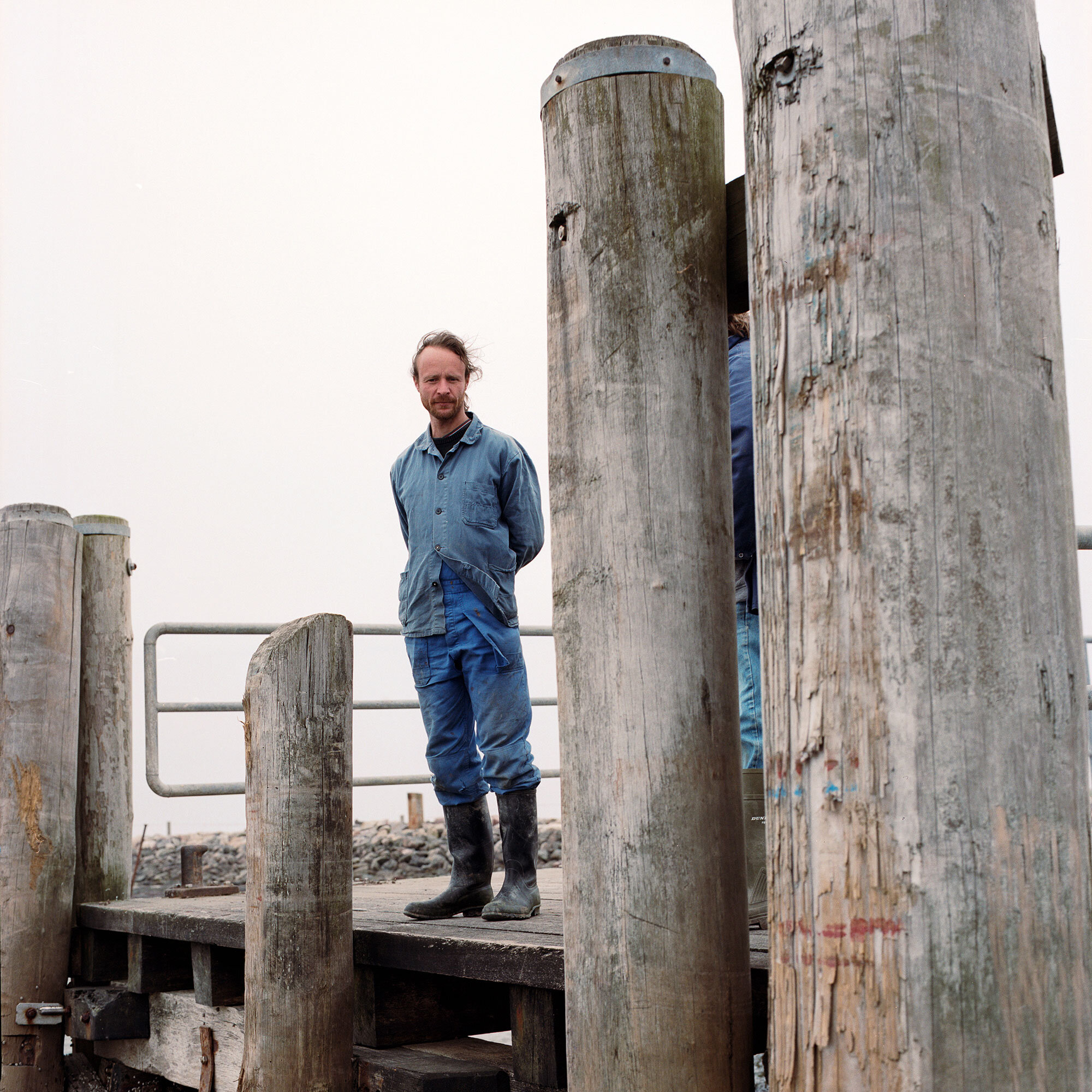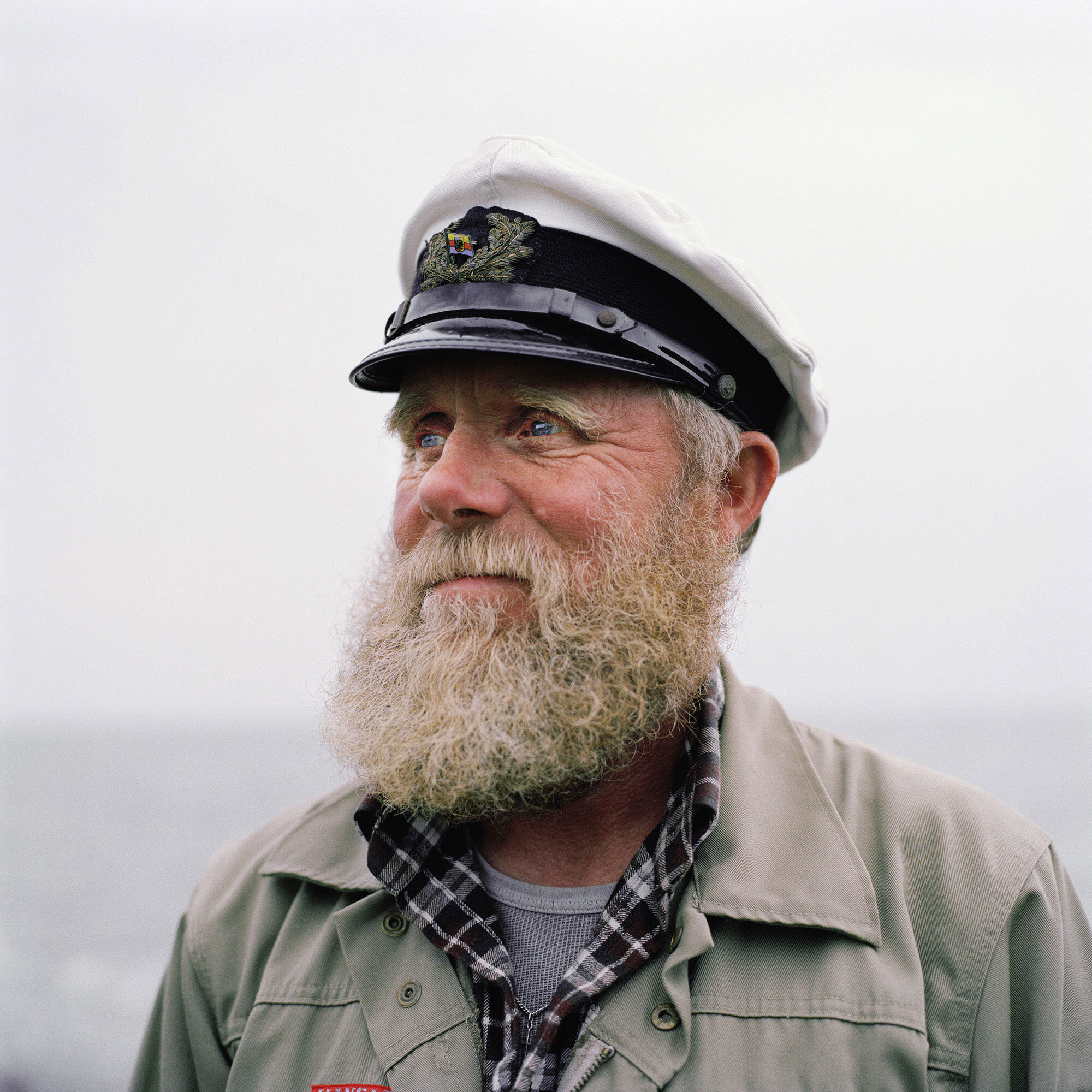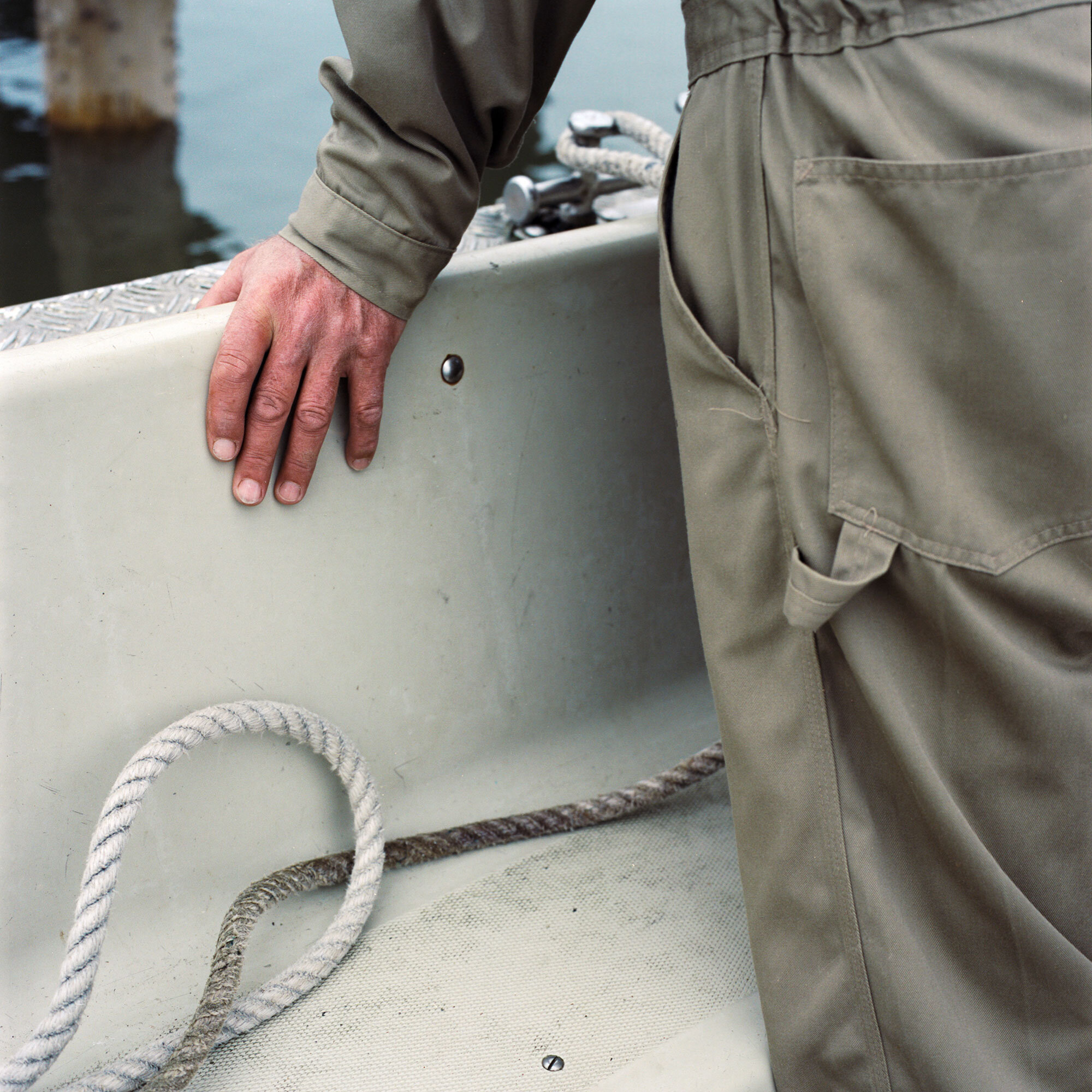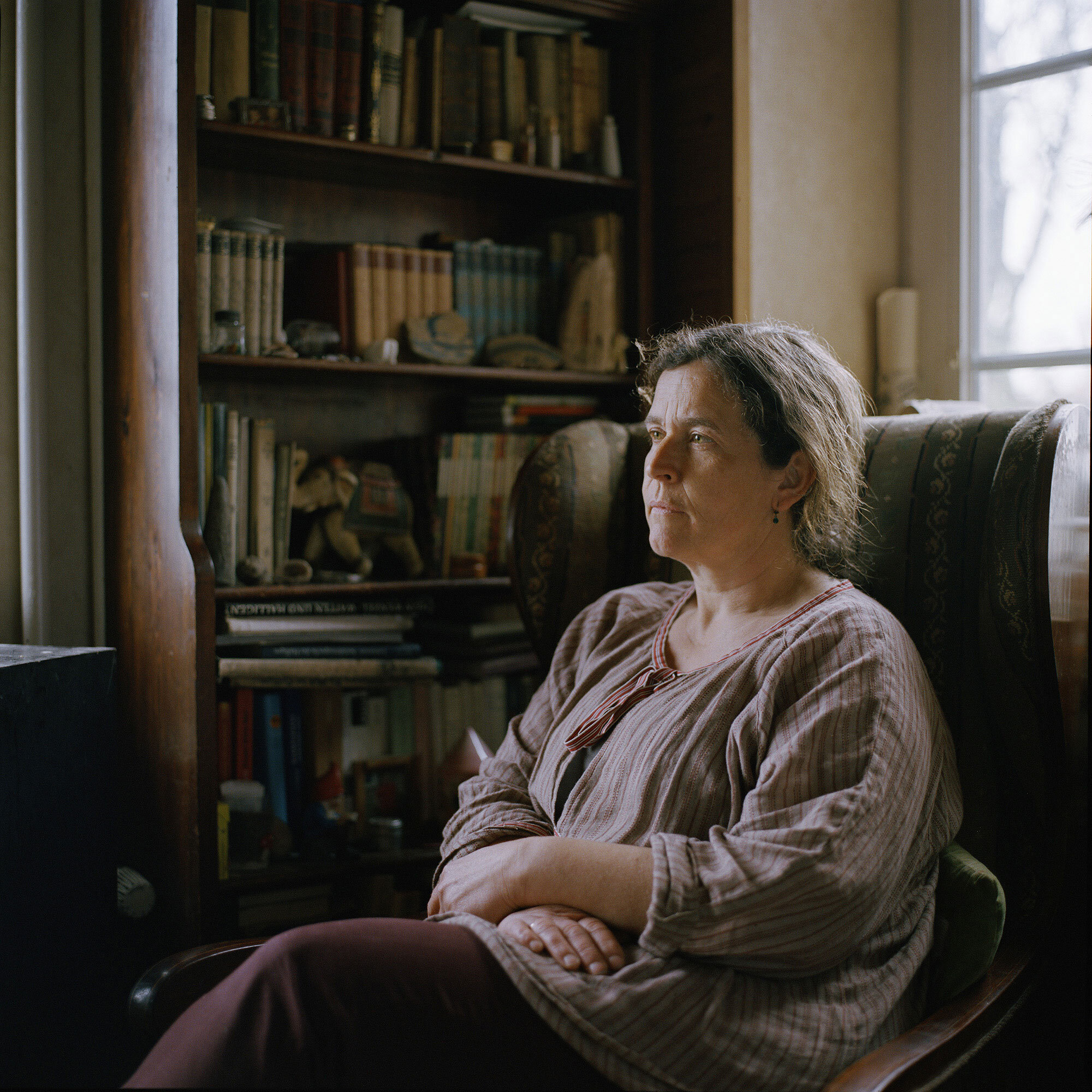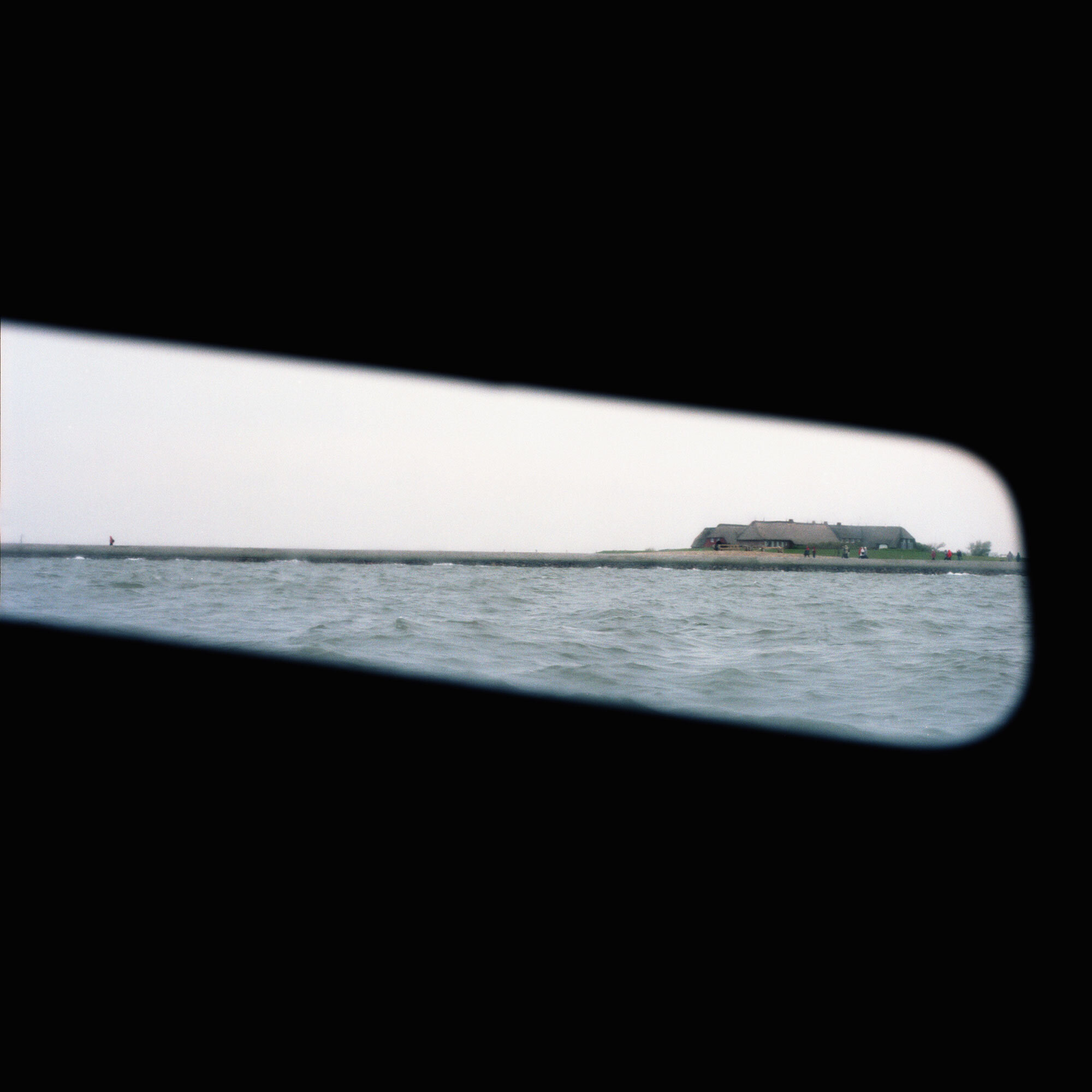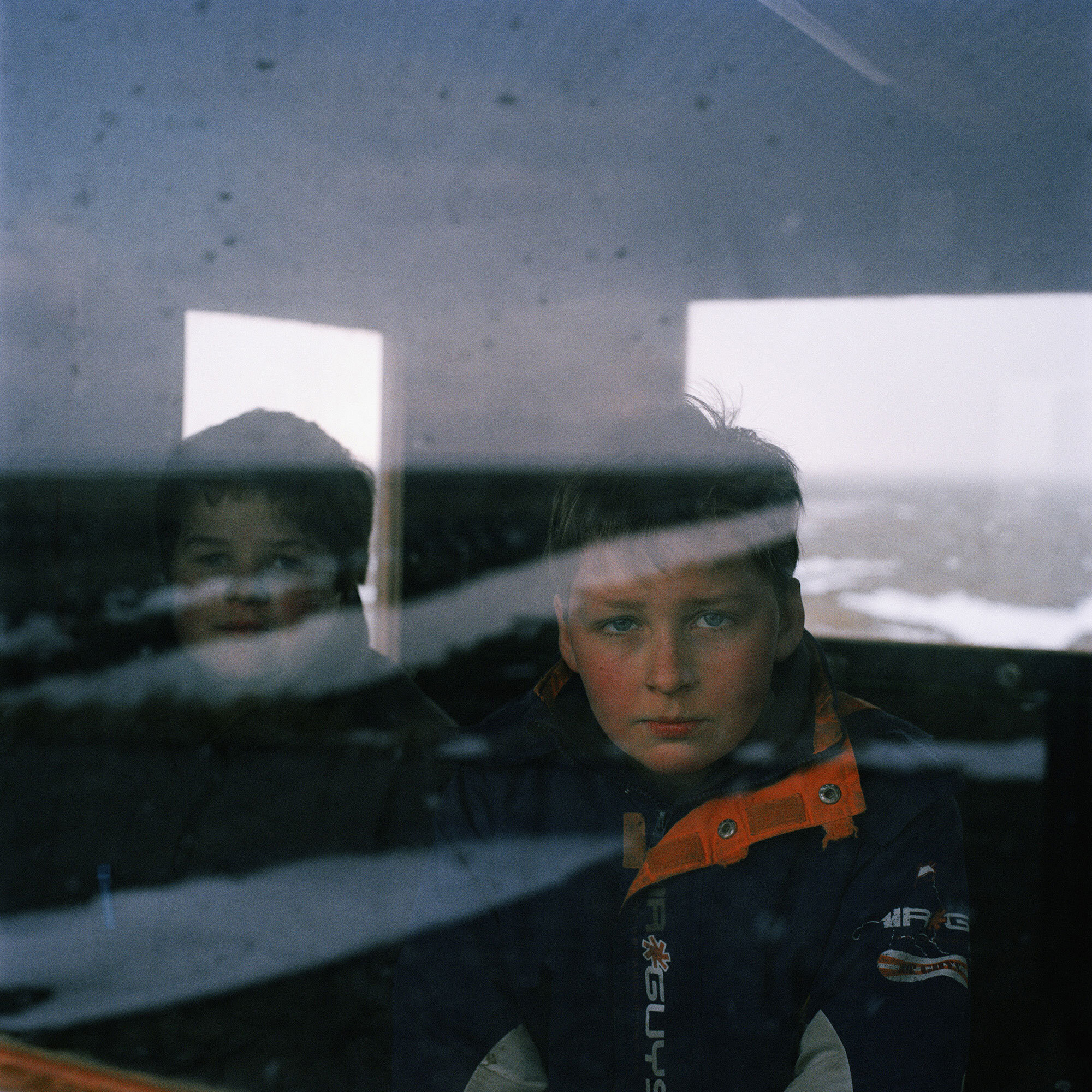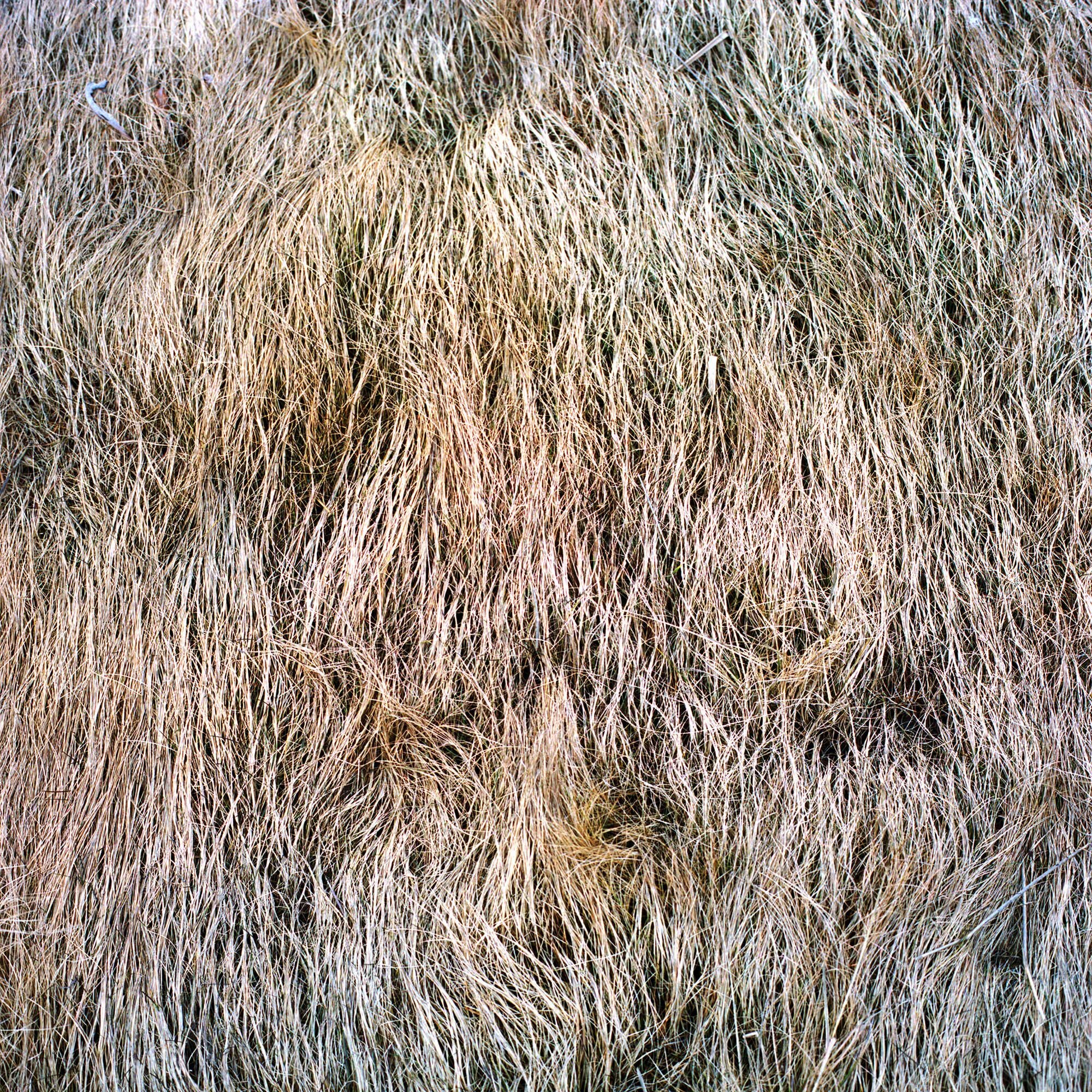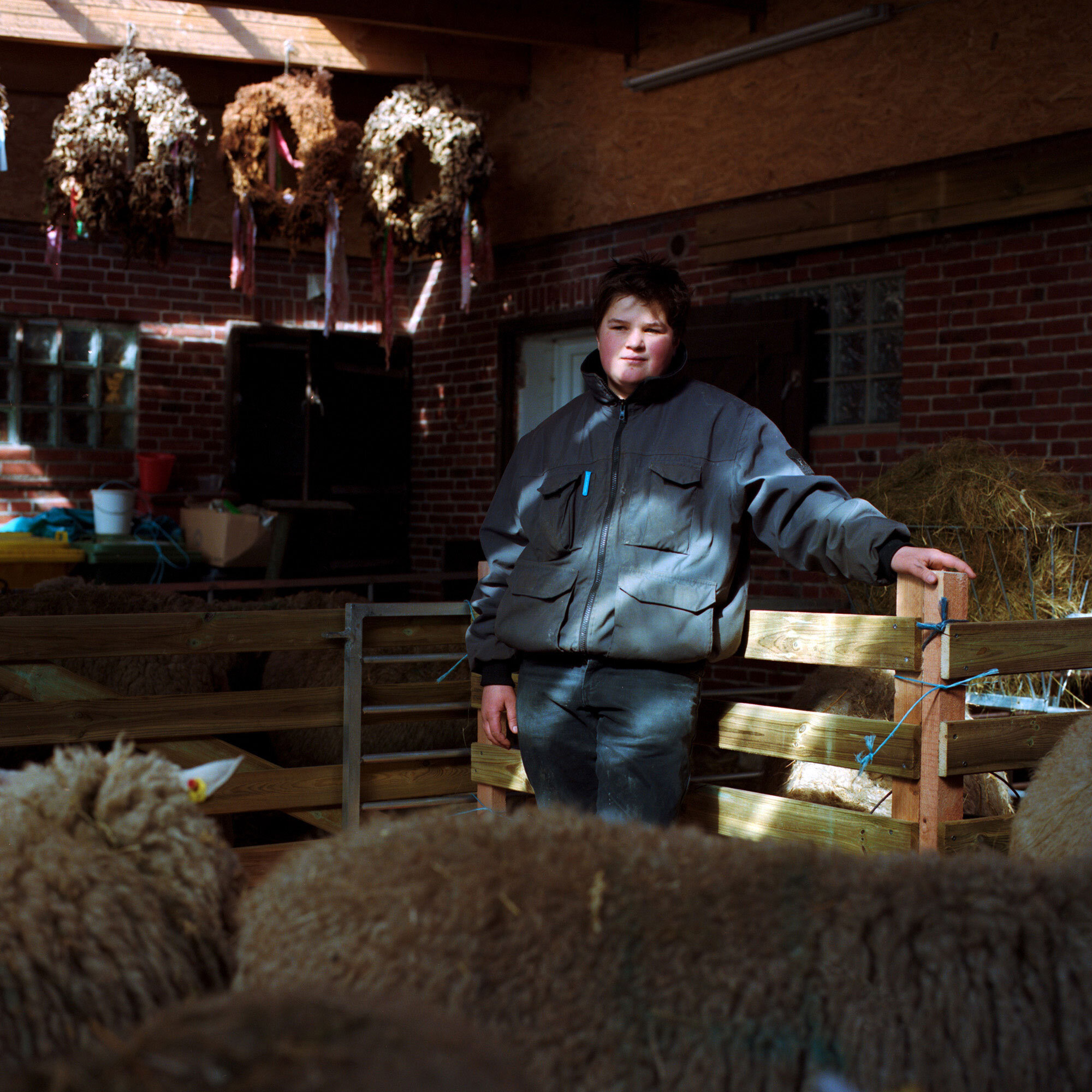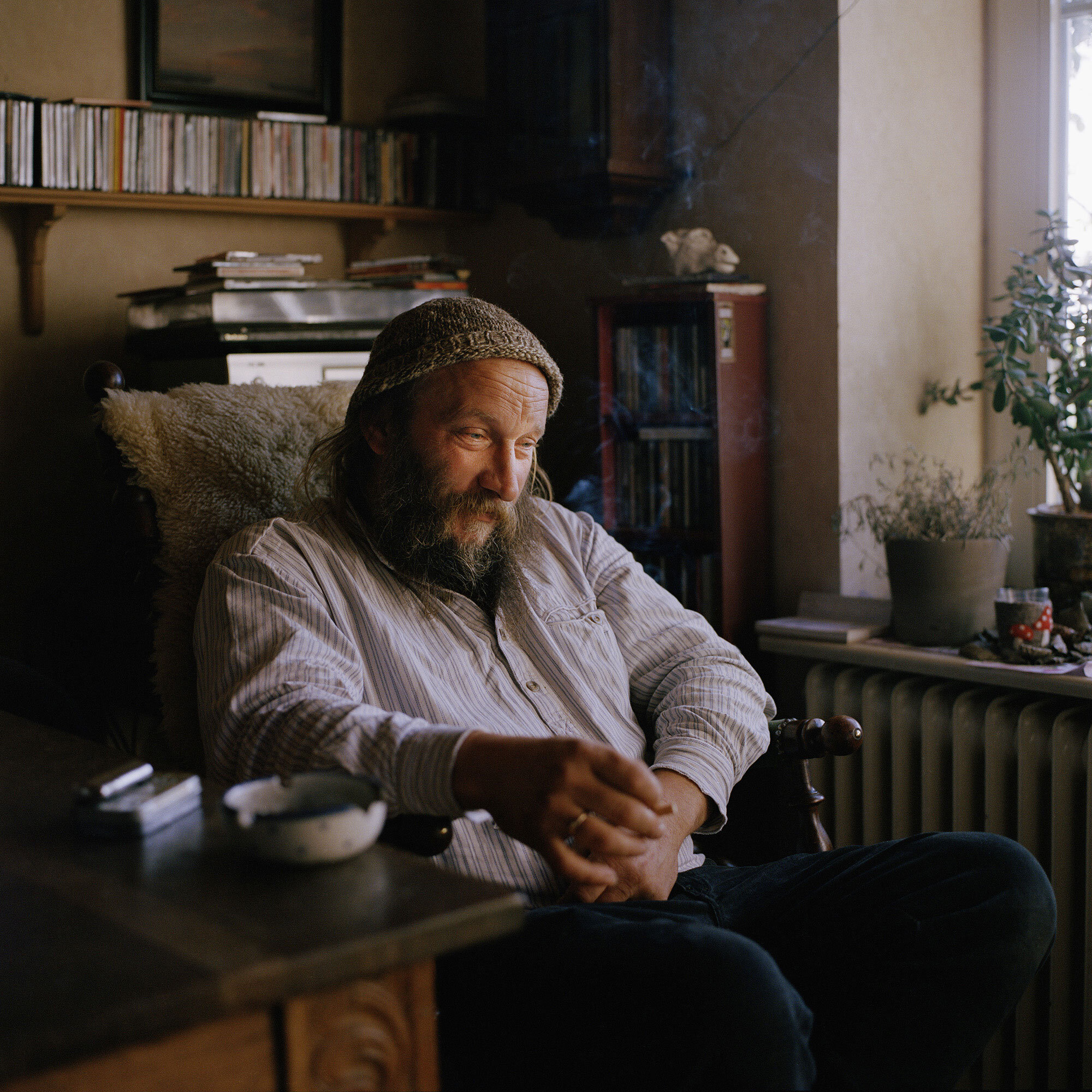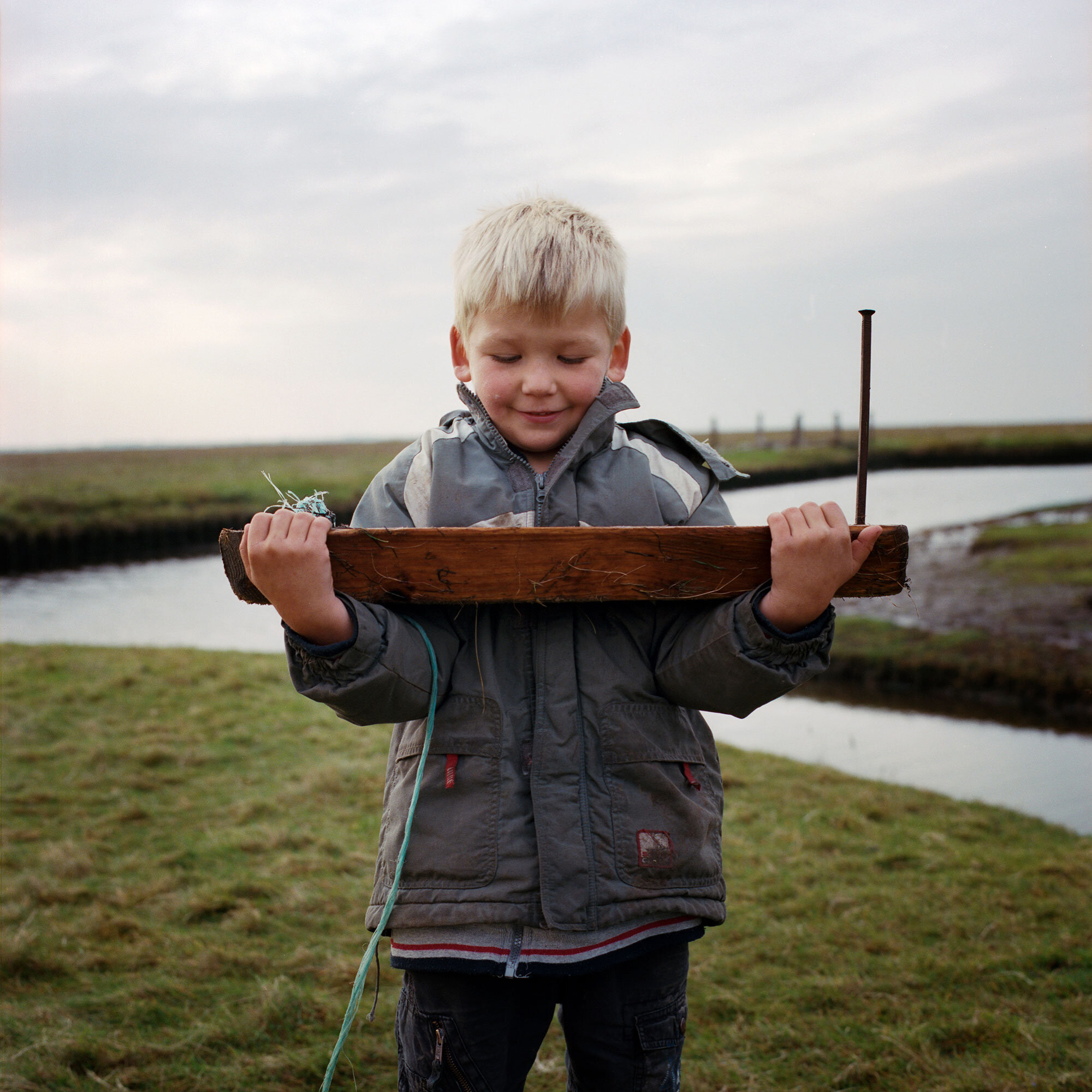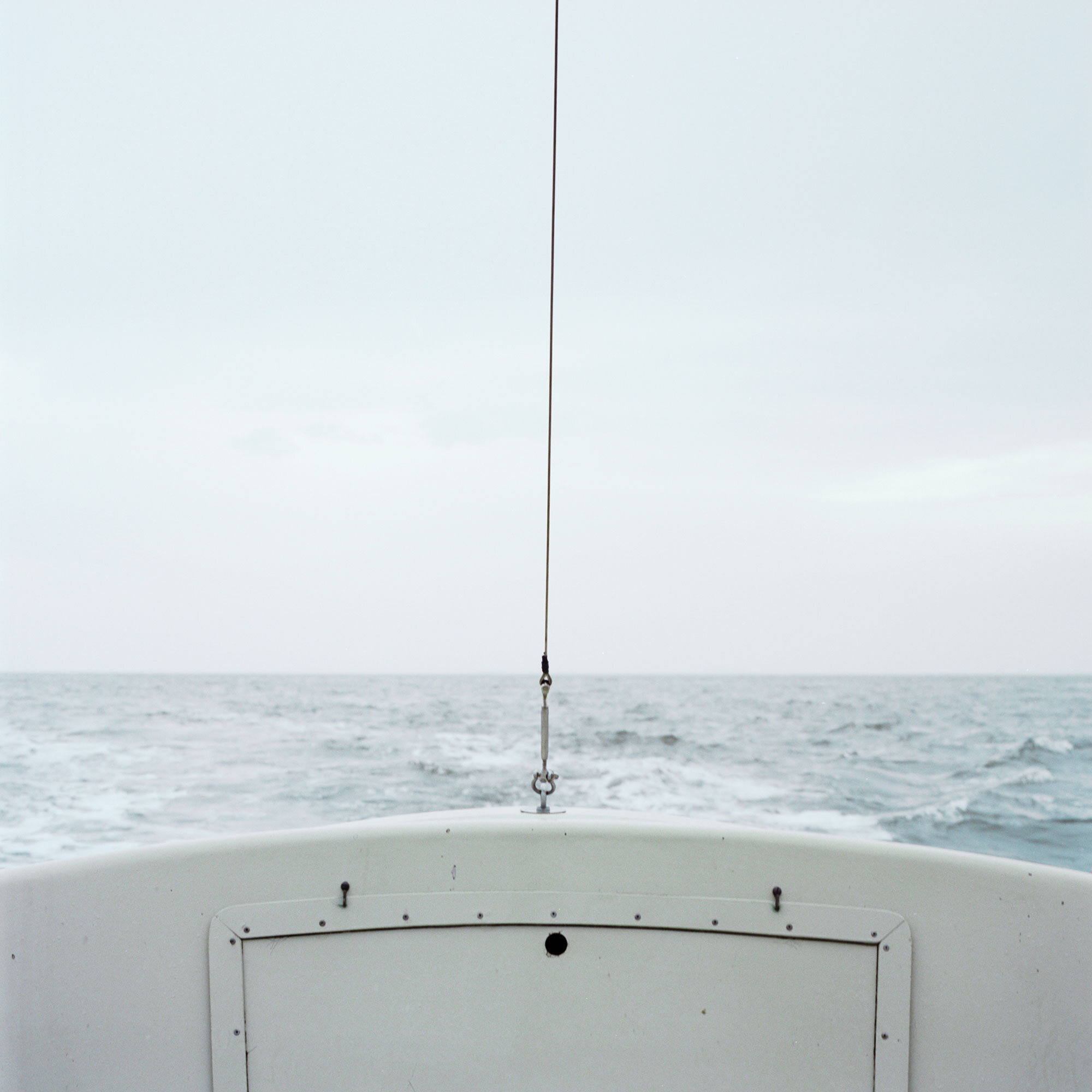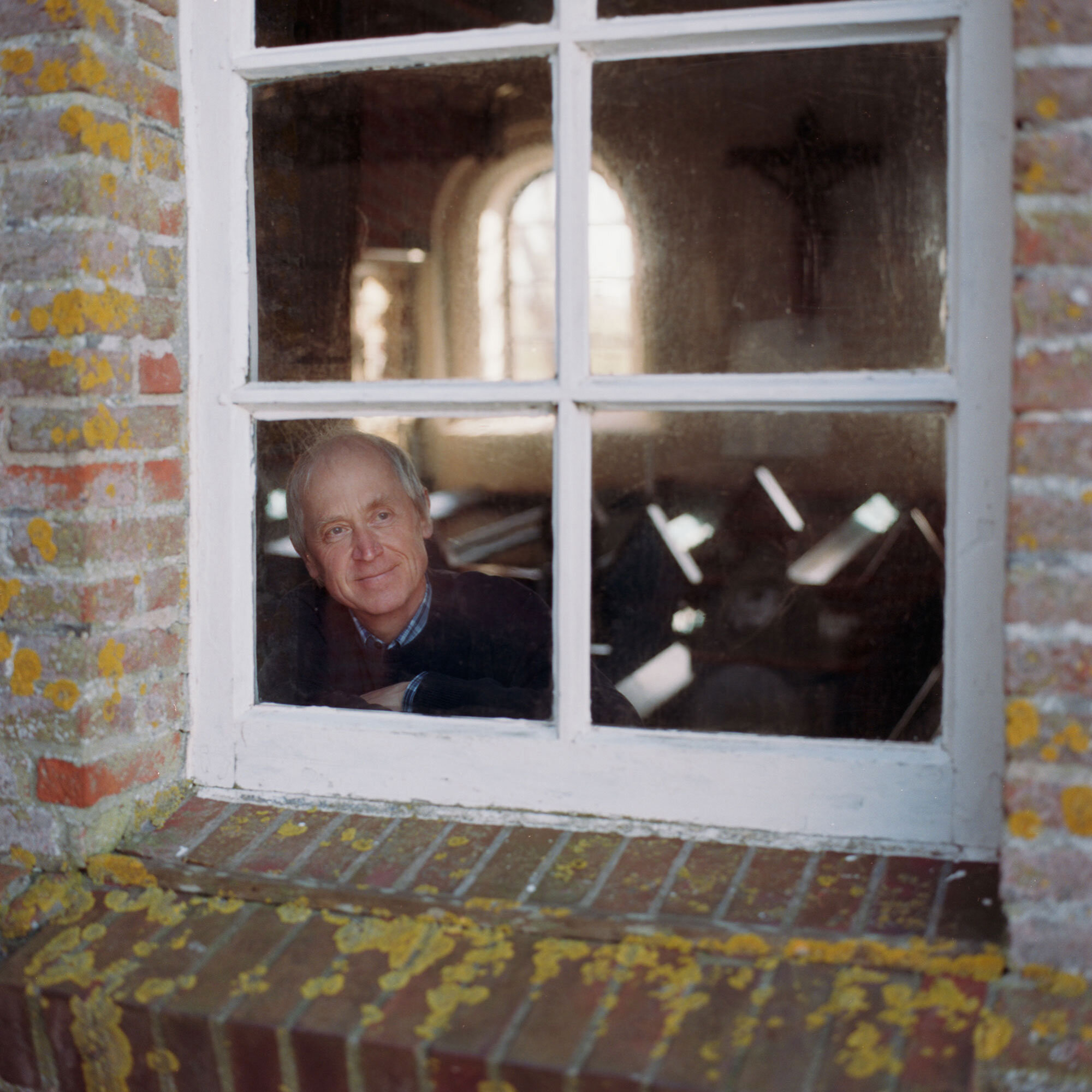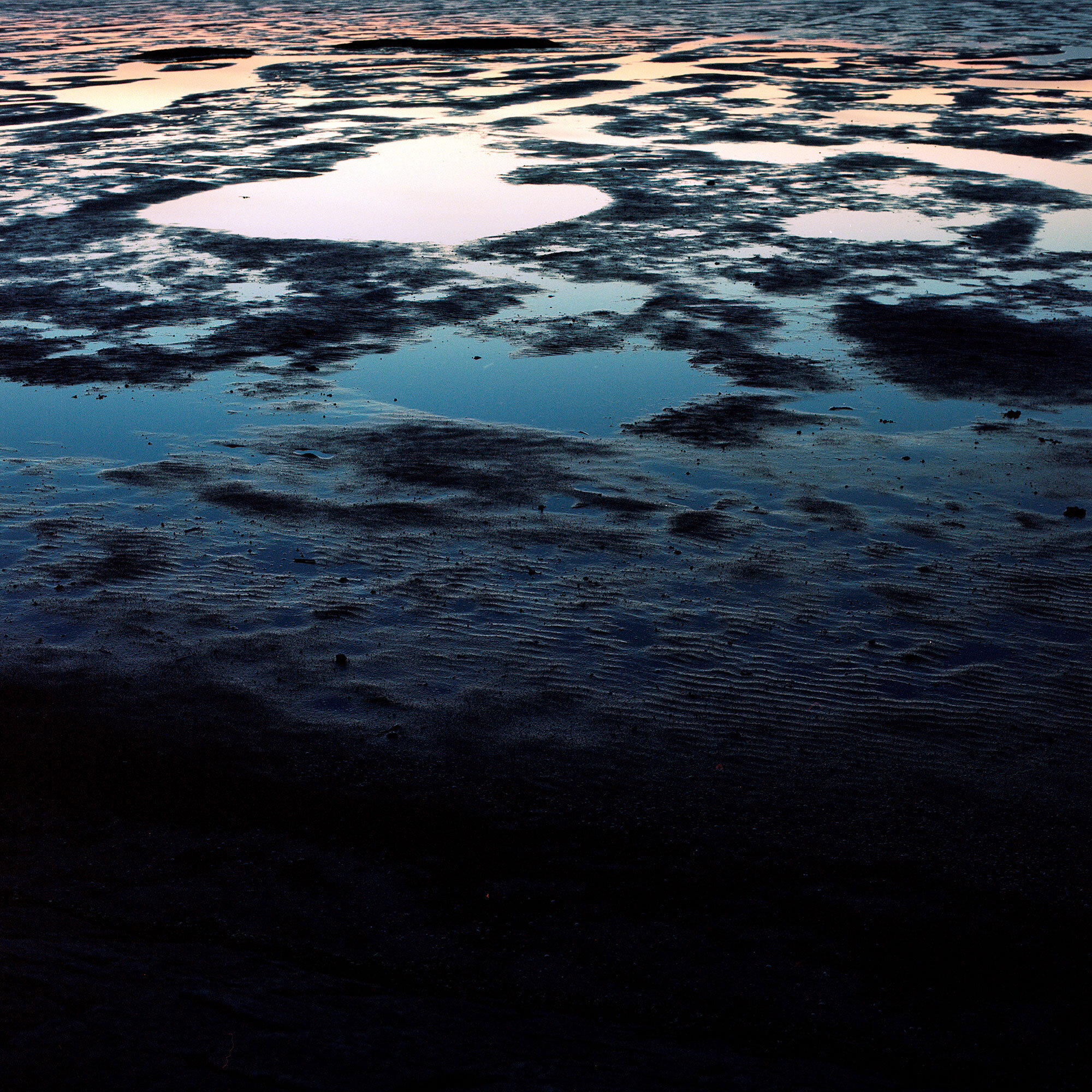Antony Sojka
Can you introduce us to your series TIDE as well as how you ended up in Halligen?
TIDE is a project I photographed about people living in a very unique place called „Halligen", which consists of ten small islands situated in the German North Sea. A „Hallig" is a very small, flat island with no protective dikes and this leads to occasional floodings of the whole salt marsh islands with just the houses, which have been build on self-made hills called „Warften", staying above the sea.
Over what period of time did you spend on this series and how did it develop over time? What was your routine for your time spent in Halligen?
I worked on the series over a period of two and a half years in my spare time. Usually I would try to work and save up for a month or two and than take a month off to travel to the Halligen and spend time there. Usually I stayed for 1-2 weeks depending on the weather and how I was progressing and use the rest of the month to process the films and make prints.
At the beginning it was very hard to get in touch with people and people didn’t like seeing me with a camera. Many of them have had bad experiences with mostly film crews who exploited them and in the end there was simply less trust. After gaining trust of a few first people it sort of rolled on. They would recommend people with great stories to meet and I would get in touch with them. Sometimes I was allowed to take a portrait, other times I wasn’t.
On a normal day I would walk all day long with my gear and search for things in the landscape to photograph. Whenever I would be near a Warft and some houses I would go up there and see if I could find someone to have a chat with. Most of the time I was alone and would enjoy the view or read books in the evening.
When a storm arrives how does the possible isolation from the land as well as each other affect those who live there?
Sadly in all the time I invested in this project I never had a chance to actually be there while the Hallig was under water! Either I was too late and no boats would leave the mainland or it happened after I was back in Berlin. From what I have been told from people that live there, they see it mostly from the fun side. If it is not stormy they take a boat and go visit a neighbour or just stay on their Warft and enjoy the view. When the weather is rough it is all about community. It doesn’t matter if you get along with your neighbour or not you go and check beforehand if they need help and make sure everyone, including all animals and products are safe. This really bond them together.
In relation to population in what ways has Halligen changed over time? How different is the perspective between generations that have lived there?
That is a bit hard to tell. The Halligen that were closest to the mainland would be connected to the mainland and ceased being a Hallig. This happened early 1500 as far as I remember correctly. Until the 19th century 100 Halligen either disappeared, grew onto other Halligen or were connected to the mainland. Currently there are 261 people living on 10 still existing Halligen.
Sadly the population is decreasing which mostly has something to do with how people live there now. For hundreds of years it was a norm that older generations would pass their house to the younger generation where they all lived together in the same house. Nowadays many people rent out rooms for tourists that sometimes come around and there is no space left in the house for the younger generations. Others decide to sell their homes and Warft to wealthy people who than use the space only for occasional vacations which takes away space for people who want to live there. Once those younger generations leave it is hard for them to find a reason to come back. All Halligen are also protected as part of a National Park and people are not allowed to build new hills (Warften) for new homes. There are also not many jobs left so the incentive to stay is sadly low.
It seems like a theme within your projects focuses on the exchange between generations and sometimes the uncertainty of passing on traditions, what draws you to this theme?
That is a good question! I could imagine it having personal reasons of my upbringing; I was alone for most of times because I had parents who were working very hard and no relatives nearby. I always enjoyed listening to people’s stories and I somehow ended up discovering this beautiful tool that photography is which enables me to get into other peoples lives and learn from them. Maybe it is also all just coincidence that I end up meeting people whose stories fit this theme. Ask me in 10 years again, maybe I understand myself better by than.
To keep up to date on Antony's upcoming work follow along here:
Instagram instagram.com/antonysojka/
Website www.tonysojka.com

